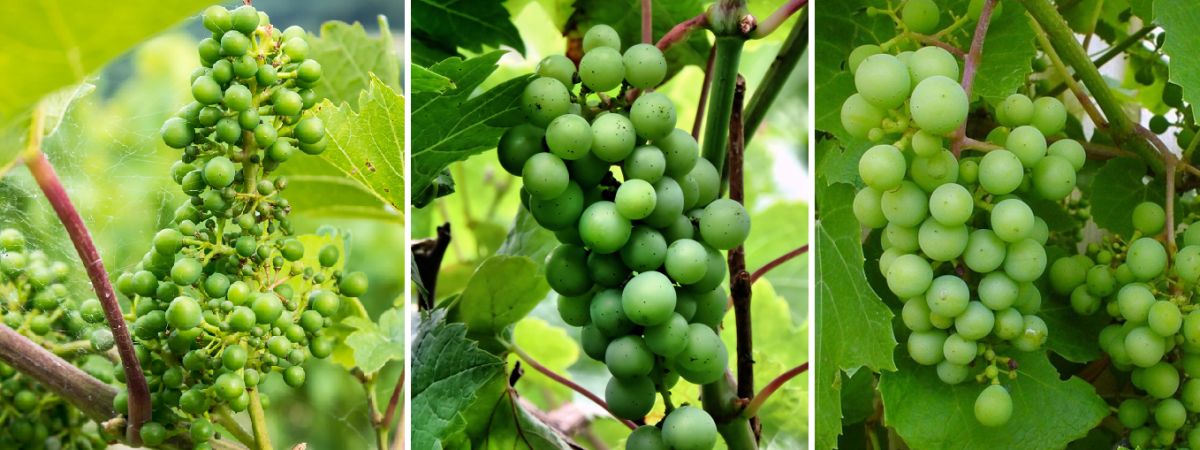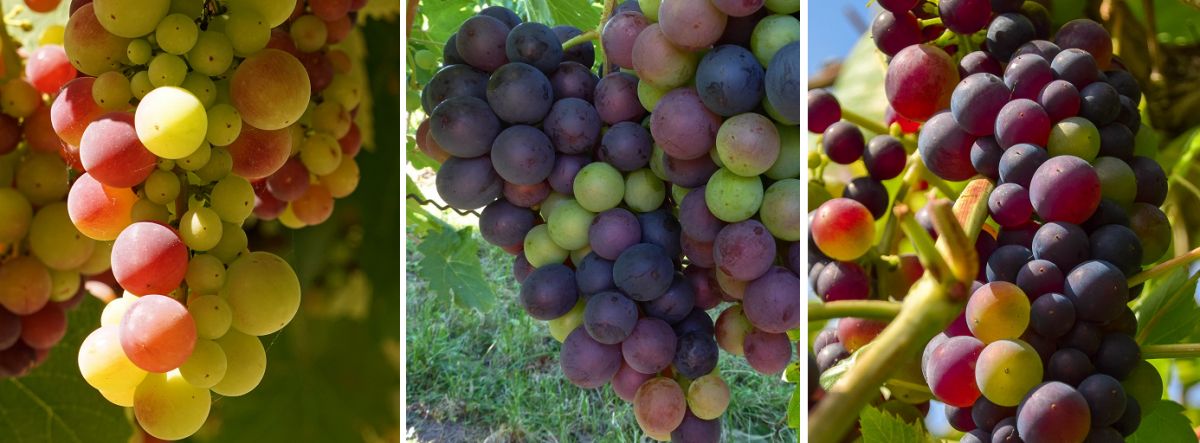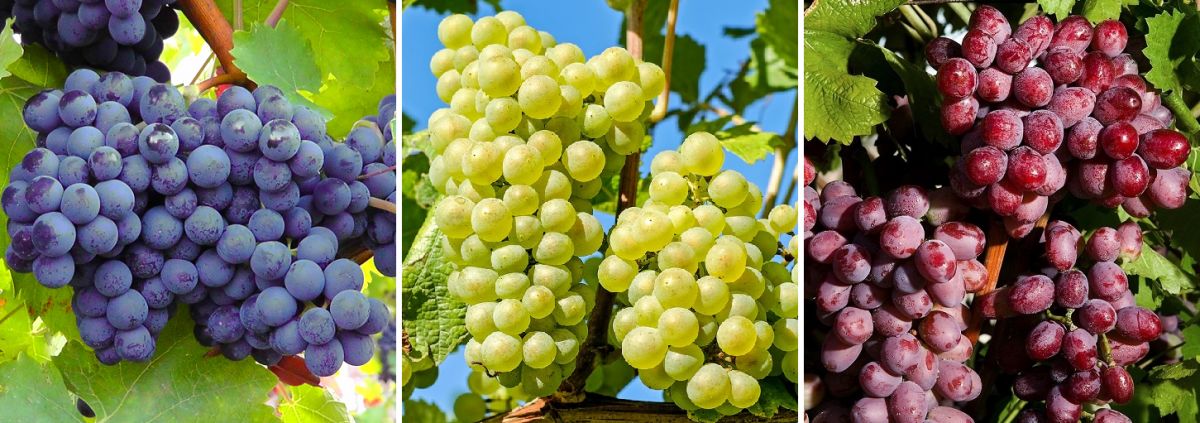Stage in the annual vegetative cycle of the vine after fruit set. This is the beginning of the ripening of the berries. Depending on the grape variety and weather conditions, this begins in the northern hemisphere at the end of July/beginning of August, in the southern hemisphere in January. The still green and hard berries have reached about half their final size. With the onset of ripening, they gradually change into a softer, plastic state. At a certain degree of softness, the colour change takes place, during which the berries begin to become light (berry brightening) or discoloured. The poisonous green colour of the berries changes to green-white, white, yellow, yellow-green, grey, pink, red or purple in the case of white wine varieties, and to blue, violet or black in the case of red wine varieties. However, this does not happen to all berries at the same time, but first affects those that were fertilised first during flowering and were most exposed to sun and heat.

Colour formation
The formation of colour in red wine varieties is favoured above all by high light intensity. With the colour change, the sugar content in the berries also begins to increase rapidly, whereby the berry sugar comes mainly from the assimilating leaves, but can also be mobilised from reserves in the wood if there is a lack of leaves, but this is then at the expense of good wood ripeness. The ripening-induced conversion of malic acid into sugar molecules also leads to acid degradation and sugar accumulation in the berries. As the sugar concentration increases, the total acidity in the berries steadily decreases, while the tartaric acid content remains more or less the same. The decrease in concentration is initially due to the increase in berry volume, because with increasing sugar concentration the osmotic pressure inside the berry increases, so that water flows passively into the berries via the guiding tissue (xylem).

Formation of the aroma substances
The berries increase in volume until the final volume is reached and the berry skin is stretched so that the xylem connection is interrupted and no further water can flow in. Without this blockage of the water flow, the sugar molecules that continue to be stored via the guiding tissue (phloem) would increase the osmotic pressure in the berry so much that the berries would burst. The final volume is reached after about three to four weeks, after which only sugar is stored until full ripeness. During this late ripening period, it is mainly the grape variety-specific aroma substances that are formed in the berries. This is described by the relatively new term engustment. The optimal state or time in the vegetation cycle for the grape harvest is called physiological r ipeness. Since this does not occur at the same time for all grapes, a selective grape harvest with several passes may be carried out.

Shoot maturity
Parallel to the véraison phase, shoot r ipening also begins, i.e. the young shoots of the vines. For the formation of excess sugar in the leaves, its storage in the berries and for good wood ripeness, a sufficient water supply during the vegetation period is of decisive importance. A lack of water is indicated by premature yellowing of the lower leaves and can temporarily bring the entire metabolism to a standstill. In the case of water stress (drought stress), the vine must keep the closing cells of the leaves closed as much as possible in order to lose as little tissue water as possible and to avoid withering death. However, when the closing cells are closed, no more carbon dioxide can be absorbed, which is necessary for sugar production through photosynthesis.
The yellowing symptoms on drought-stressed plants can be interpreted as hunger symptoms, because without carbon dioxide uptake and assimilation, the plant cannot maintain its metabolism in the long term. Such drought stress phases always have a negative effect on the balance of metabolic and sugar production and thus also on the quality of the harvest. The completion of the véraison or the next point in the cycle is called maturation.
Voices of our members

The glossary is a monumental achievement and one of the most important contributions to wine knowledge. Of all the encyclopaedias I use on the subject of wine, it is by far the most important. That was the case ten years ago and it hasn't changed since.
Andreas Essl
Autor, Modena